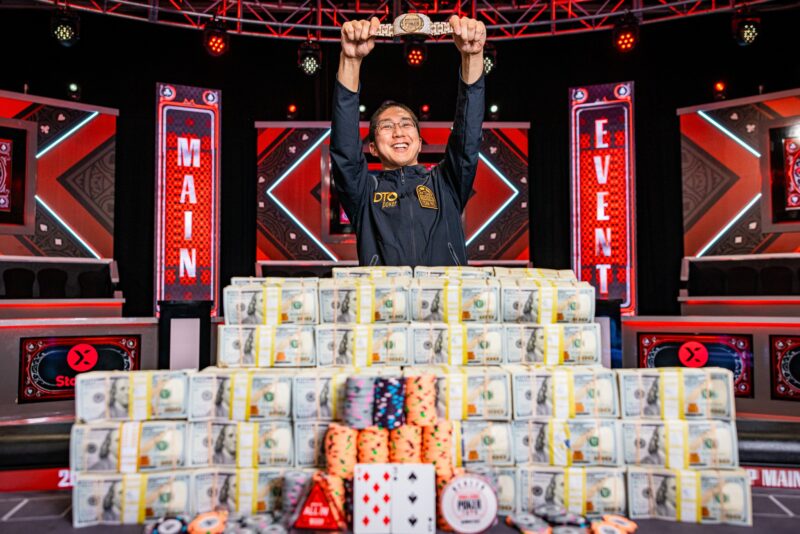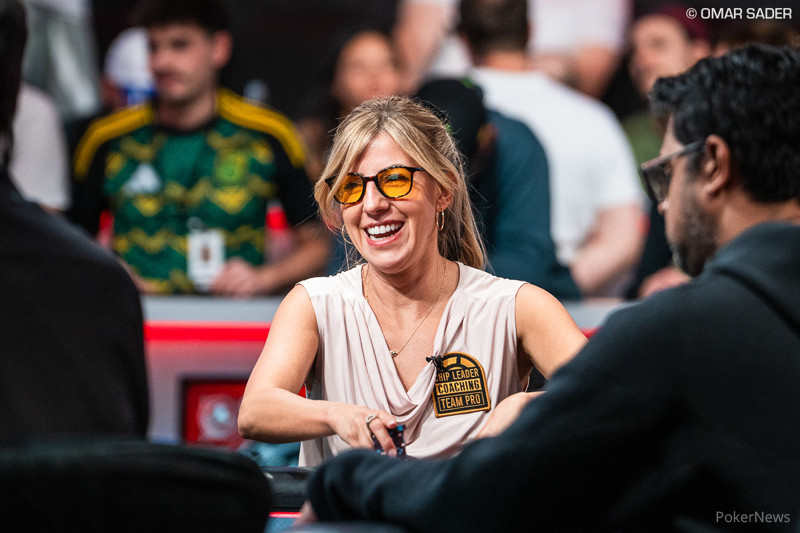My previous article established that we can play a far wider range of starting hands from the later positions than we should play from early and middle positions. This is the natural consequence of the huge impact that superior position has in our profitability.

“He who hesitates is sometimes wise.”
– Malcolm Forbes
My Baseline Starting Hand Chart
Now we must to decide how to play these “extra” hands.
Figure 1 depicts my baseline starting hand chart for a typical Vegas $1/$2 game, including our “playable” ranges from the hijack, cutoff and button. We can quibble about the ranking order, but my choices are based on the hands I think play best in a typically loose and passive Vegas game, arranged into convenient groups. (You can create your own chart if you disagree.)

The chart symbols are simple: “R-D” means Raise-or-Defend; we normally Raise when we are not facing a raise, and Defend when we are facing a raise. “Defend” simply means that we don’t fold; we re-raise or call. So when we are in the hijack with TT, we open or raise limpers. If it is raised ahead of us, we re-raise or call.
“R-F” means we normally raise when we are not facing a raise, but we fold otherwise. So we raise limpers with 77 in the cutoff, but we fold when it is raised ahead of us.
“L-F” means we normally limp, but fold when facing a raise. Remember, this is our default baseline. We can fold instead of limping when our table is aggressive, and we can call a raise when the implied odds justify it. Notice that these ranges each get wider as our position improves.
“RFI-LF” means we should “Raise First-In” when we have an open opportunity. Otherwise, we limp behind limpers, and fold to a raise.
Fundamental Reasons for Raising
There is only one correct reason to raise; we raise when it produces the highest total EV for the hand! It isn’t sufficient that our raise be +EV for the current street, which we can estimate using Flopzilla. It should have the highest EV for the completed hand.
This is usually difficult to estimate, even away from the table, since it involves many assumptions about what will happen after we raise, not just pre-flop, but on each subsequent street. Therefore, maximizing our profit by raising takes a lot of skill.
There are several secondary reasons we might raise from LP or the button:
We can raise for value. Raising with a “R-D” combo is nearly always for value. It’s easy to see that raising a limper with AQs is for value. But we can also value-raise from the hijack with hands like 88, AJs and KQs. As our position improves, we can value-raise with a wider range, since we are less likely to face strong opposition and because superior position can make up for a lack of hand strength, especially when we are heads up.
We can raise to isolate a weak player. Thus, we might isolate a single limper from the cutoff by raising QJs, since we are more likely to face a single villain with superior post-flop position. When we face several limpers, we might simply limp, since Vegas $1/$2 players don’t like to fold.
We can raise as a bluff. This is usually a dubious pre-flop strategy because Vegas $1/$2 players will call far too often. So, bluff-raising four limpers from the button simply doesn’t work well because we are likely to face too many villains. But, we can open-raise from the button with a very wide range because, even though we might win the pot outright, we are guaranteed superior post-flop position and are likely to be heads up when we do see a flop. This concept is especially important when the player to our left provides us with a pre-folding tell, which can effectively allow us to play our button strategy from the cutoff.
When Limping Can Be Our Best Friend
The optimal pre-flop action for online cash games is nearly always to raise or fold. We never limp, and we rarely call a raise. So our optimal online stat may be something like “15/13,” where we play 15 percent of our hands, but raise 13 percent of them. (We can occasionally call a raise in the right situation.)
This strategy doesn’t work as well in a low-stakes cash game, however. Vegas $1/$2 players call raises much more frequently than online players, leading to fewer pre-flop take-downs, and many more family pots. Furthermore, the average online pre-flop raise is only 2.5 BBs, whereas the average Vegas $1/$2 raise is 5.0 BBs.
So our Vegas raise risks more money and succeeds less often. We can still raise for value, but raising to isolate or to bluff simply isn’t very effective in most Vegas $1/$2 games. “I just can’t beat these donkeys. They won’t fold!”
Still, that doesn’t mean we should fold the marginal hands we might otherwise raise in an online game. The average winning pot size is 65 percent larger in the Vegas game (in big blinds), so we want to play more hands against these donkeys. But since we can’t raise, and we don’t want to fold, limping can be our best choice.
Suppose we have a hand like 22 in the cutoff with three limpers ahead of us. Raising to $15 to win the $9 pot outright isn’t very effective. More likely, we get called by two or three villains and miss the flop. We could bet more, with additional risk, but we’ll still usually get a caller or two. On the other hand, we can limp behind with much less risk.
We can make similar arguments for each of the limping hands in my starting hands chart. (In fact, a mathematical analysis can be found in Donkey Poker.) By following this chart, you’ll achieve a Vegas $1/$2 stat of about 18/11. This much tighter and much more aggressive than the average Vegas player (35/6), but somewhat looser and less aggressive than the optimal online stat (15/12).
Calling Pre-flop Raises is a Leak, Even with Good Position
Calling too many pre-flop raises is one of the biggest leaks I see in Vegas $1/$2 games. If a player likes his hand, he wants to play it. If he faces a normal raise, he still wants to play it. (This suggests that we should make a healthy raise ourselves when we have a value-raising hand.)
We should have a visceral distaste for calling pre-flop raises, especially from early and middle positions.
Our instinct should be to fold or re-raise. So “Defend” usually means “three-bet” when we are in EP/MP. We might fold some pretty decent EP/MP hands when facing a raise, such as 88 and AJs. This is even more correct when we face a three-bet.
This is the case, even when we expect to have good post-flop position. To begin with, Vegas $1/$2 players have a very tight pre-flop raising range (~6 percent), and an even tighter pre-flop three-betting range (~1 percent). So these players will usually have a significant range advantage over us. Therefore, we should usually fold any R-F or L-F combo in our chart.
Nevertheless, there will be occasional off-baseline calls we can make. For example, suppose an EP nit opens to only 4 BBs and is called by two players before the action reaches us on the button. We might call with 22 when we believe flopping a set will win a big pot. Remember, Figure 1 is merely our baseline chart. A significant portion of our long-term profit depends on the skill of our off-baseline adjustments.
Conclusion
As our position improves, we play more hands and we raise them more often. We look for opportunities to play a pot cheaply with speculative hands when we are likely to have good post-flop position. We don’t call pre-flop raises lightly, but we do try to isolate/steal from the button with a very wide range.
Steve Selbrede is a retired Silicon Valley engineer living in Las Vegas. He is the author of six poker books, including his most recent Tournament Poker for the Rest of Us (presented by CardsChat). The charts in this article come from his book Donkey Poker Volume 1: Preflop.


